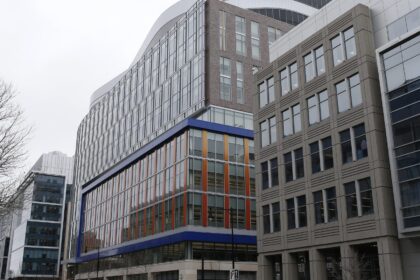Every living cell transcribes DNA into RNA. This process begins when an enzyme called RNA polymerase (RNAP) clamps onto DNA. Within a few hundred milliseconds, the DNA double helix unwinds to form a junction known as the transcription bubble, allowing one exposed DNA strand to be copied into a complementary RNA strand.
How RNAP accomplishes this feat is largely unknown. A snapshot of RNAP during the opening of that bubble could provide a wealth of information, but the process happens too quickly for current technology to easily capture visualizations of these structures. Now a new study has arrived Nature Structural and molecular biology describes E. coli RNAP during transcription bubble opening.
The findings, recorded within 500 milliseconds of mixing RNAP with DNA, shed light on fundamental mechanisms of transcription and answer long-standing questions about the initiation mechanism and the importance of its different steps. “This is the first time anyone has been able to capture transient transcription complexes as they form in real time,” said first author Ruth Saecker, a research specialist in Seth Darst’s lab at Rockefeller. “Understanding this process is crucial because it is an important regulatory step in gene expression.”
An unprecedented view
Darst was the first to describe the structure of bacterial RNAP, and unraveling its finer points is still a major focus of his lab. While decades of work have shown that RNAP binding to a specific DNA sequence initiates a series of steps that open the bubble, the way RNAP separates the strands and positions one strand in its active site remains hotly debated.
Early work in the field suggested that bubble opening causes a crucial delay in the process, dictating how quickly RNAP can move to RNA synthesis. Later results in the field challenged that view, and several theories emerged about the nature of this rate-limiting step. “We knew from other biological techniques that when RNAP first comes into contact with DNA, it makes a number of intermediate complexes that are highly regulated,” said co-author Andreas Mueller, a postdoctoral researcher in the lab. “But this part of the process can happen in less than a second, and we were not able to capture structures on such a short time scale.”
To better understand these intermediate complexes, the team collaborated with colleagues at the New York Structural Biology Center, who developed a robotic, inkjet-based system that could quickly prepare biological samples for cryo-electron microscopy analysis. Through this collaboration, the team captured complexes that formed in the first 100 to 500 milliseconds of RNAP encounter DNA, providing images of four different intermediate complexes that were detailed enough to allow analysis.
For the first time, a clear picture of the structural changes and intermediates that form during the initial phase of RNA polymerase binding to DNA was brought into focus. “The technology was extremely important for this experiment,” says Saecker. “Without the ability to quickly mix DNA and RNAP and image them in real time, these results don’t exist.”
Get into position
Examining these images, the team managed to trace a series of events that show how RNAP interacts with the DNA strands as they separate, at previously unseen levels of detail. As the DNA unwinds, RNAP gradually grabs one of the DNA strands to prevent the double helix from coming back together. Each new interaction causes RNAP to change shape, allowing more protein-DNA connections to form. This involves pushing out part of a protein that blocks DNA from entering the active site of RNAP. This forms a stable transcription bubble.
The team proposes that the rate-limiting step in transcription may be the positioning of the DNA template strand within the active site of the RNAP enzyme. This step involves overcoming significant energy barriers and rearranging various components. Future research will aim to confirm this new hypothesis and investigate other steps in transcription.
“We only looked at the very beginning steps of this investigation,” Mueller said. “Next, we hope to look at other complexes, later time points and additional steps in the transcription cycle.”
In addition to resolving conflicting theories about how DNA strands are captured, these results highlight the value of the new method, which can capture molecular events that occur within milliseconds in real time. This technology will enable many more such studies, allowing scientists to visualize dynamic interactions in biological systems.
“If we want to understand one of the most fundamental processes in life, something that all cells do, we need to understand how its progress and speed are regulated,” says Darst. “Once we know that, we will have a much clearer picture of how transcription begins.”





















